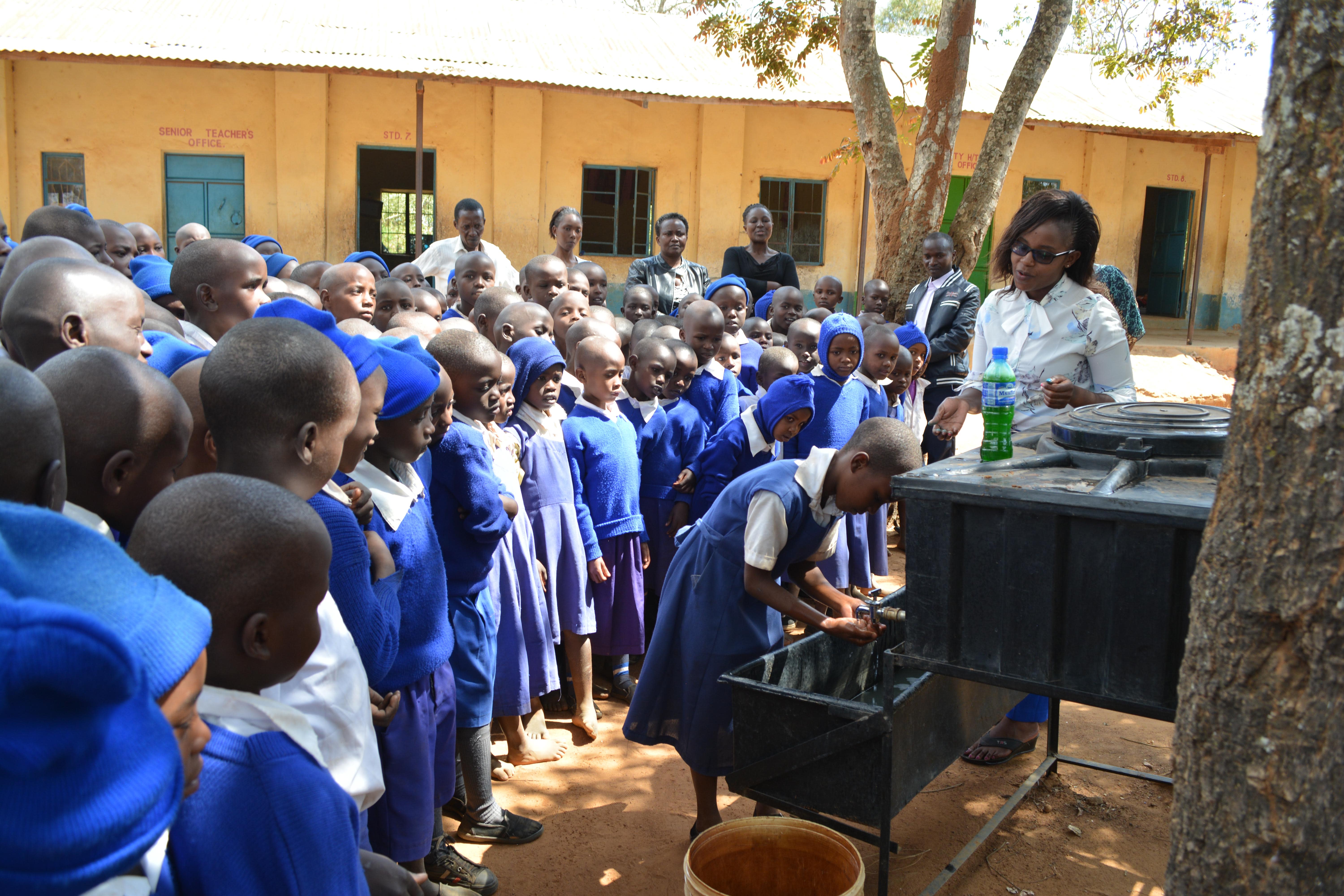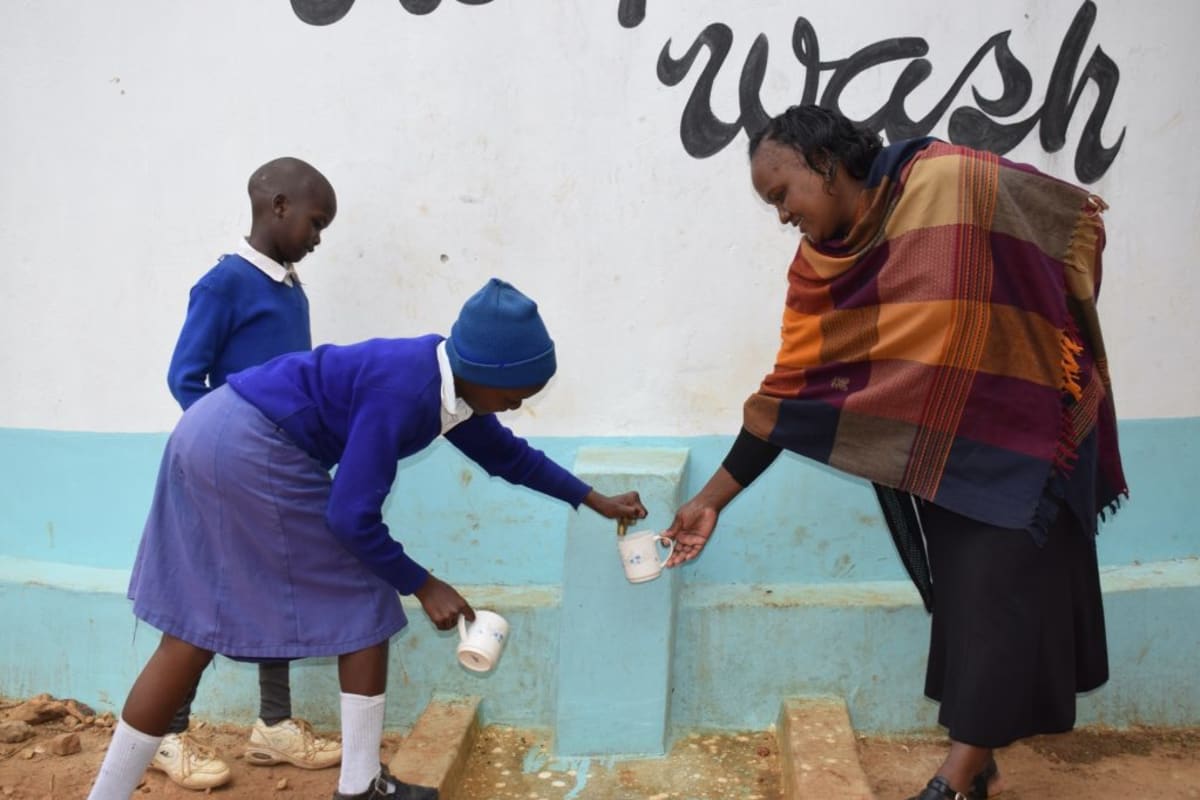Students at Kyaani Primary School do not have a reliable source of water. The closest place to get water is a well in the community, but this well already has hundreds of people relying on it. When students go to fetch water there, they are pushed to the back of the line with the reasoning that it's not the school's water well, it’s the community's. Students return to class after this strenuous task too exhausted to do well in their studies.
The school administration thought their problems were solved when a solar pump and piping were installed to pull water from the community well to a plastic tank on school grounds. They hoped that the water pumped to the tank would prevent their children from leaving school in search of it. But to their disappointment, the solar system constantly fails; there are many times that the panels do not receive enough light or the community is overusing the well.
As a result, the students must turn to alternative sources of water. They must carry containers of water from home to make up for the shortage, and go back out during the day. That water is of unknown origin and is often collected from open or unsafe sources. A rainwater tank on the school grounds will prevent the more than 275 students at the school from wasting time fetching water from the community well and other sources. It will provide a safe source for drinking water at the school, boosting student health and keep them in the classroom.
"Our state of hygiene is average. We are trying our level best to create a conducive environment for our students, one that will not disrupt their studies at any cost," Headteacher Matheka said.
"If we had enough water storage facilities, we could go very far, and we would really develop this place."
What we can do:
Training
Students and staff will be trained for one day. Those in attendance will form a school health club that will promote good hygiene and sanitation practices both at school and at home. They will learn all of the steps to proper handwashing, how to treat water, and how to keep their environment clean. The school will also be taught how to best oversee and maintain their new rainwater catchment tank and handwashing stations.
Handwashing Stations
Three handwashing stations will be delivered at the project’s completion. These are 1,000-liter plastic tanks fitted with four taps. The health club and school management will be responsible for making sure tanks are filled with water and that a cleaning agent such as soap or ash is available.
Rainwater Catchment Tank
We will build a 104,000-liter rainwater catchment tank for this school. This water will benefit the students, teachers, and supplementary staff. Parents will mobilize the materials needed for construction, such as sand and stone. They will also lend some strong arms to help with the actual construction.
The huge capacity of this tank makes the others look tiny in comparison; 104,000 liters should be enough water to carry students and staff through the entire dry season. As soon as the tank has time to cure, it can begin to collect rainwater for drinking, cooking, and cleaning!

 Rainwater Catchment
Rainwater Catchment
 Rehabilitation Project
Rehabilitation Project































